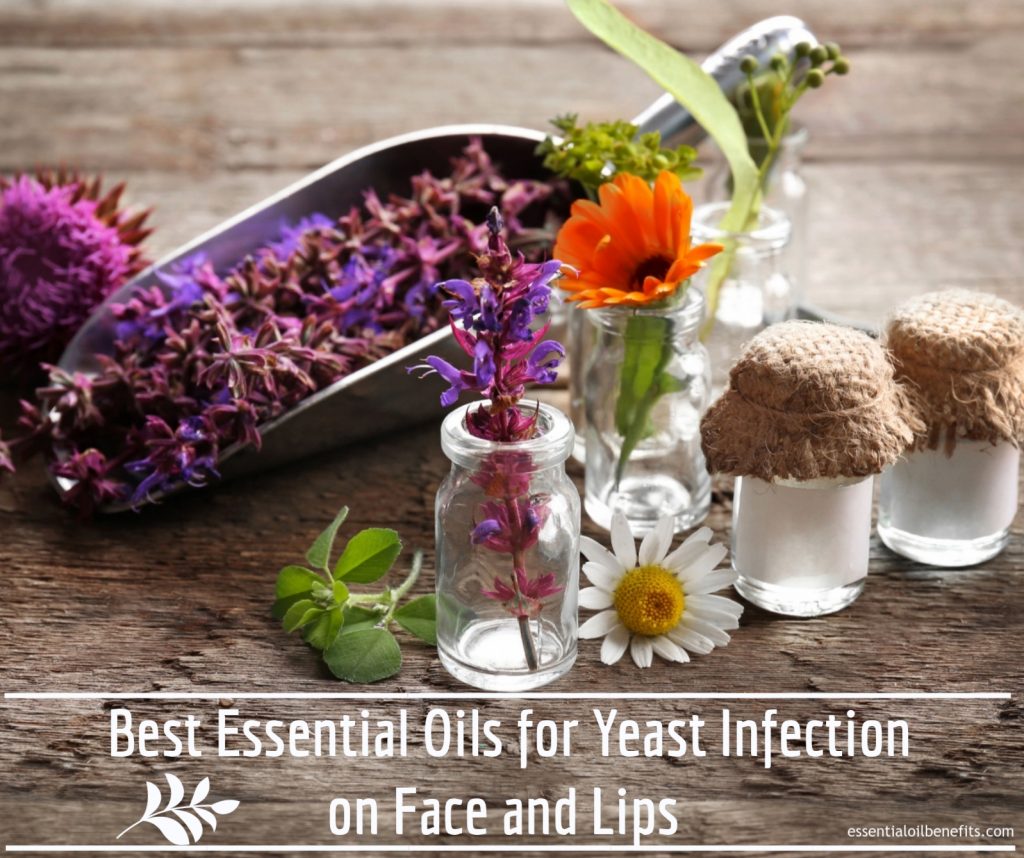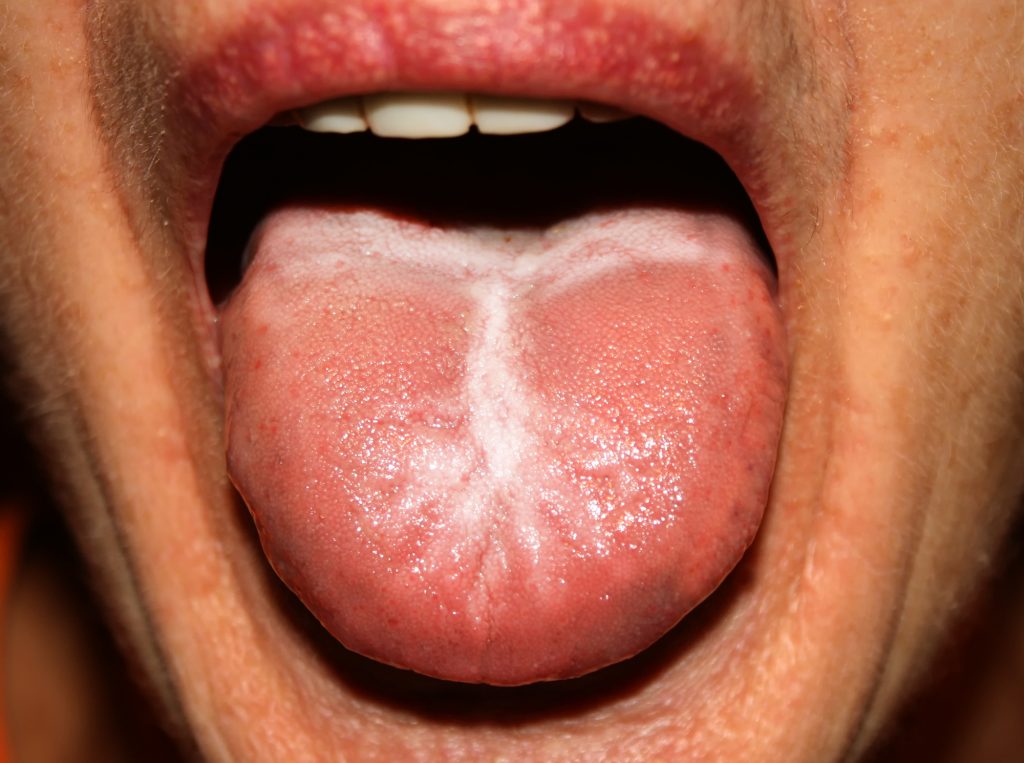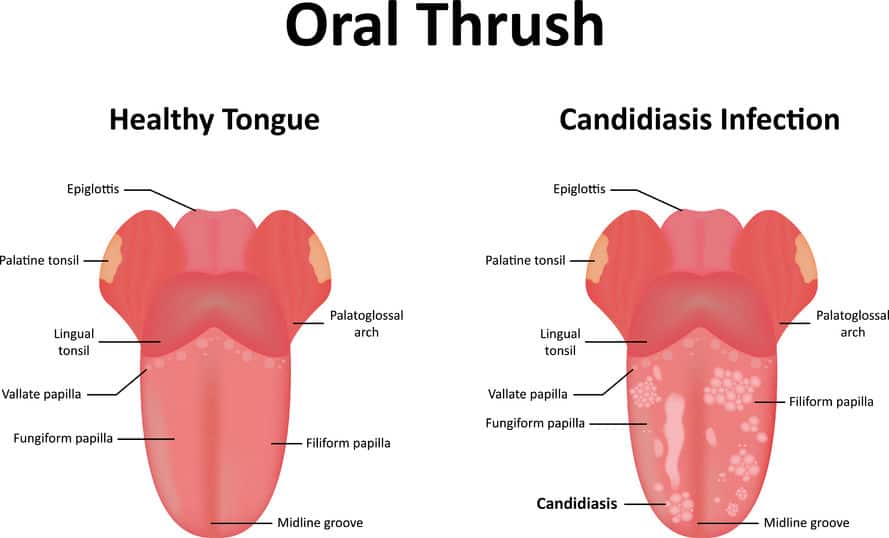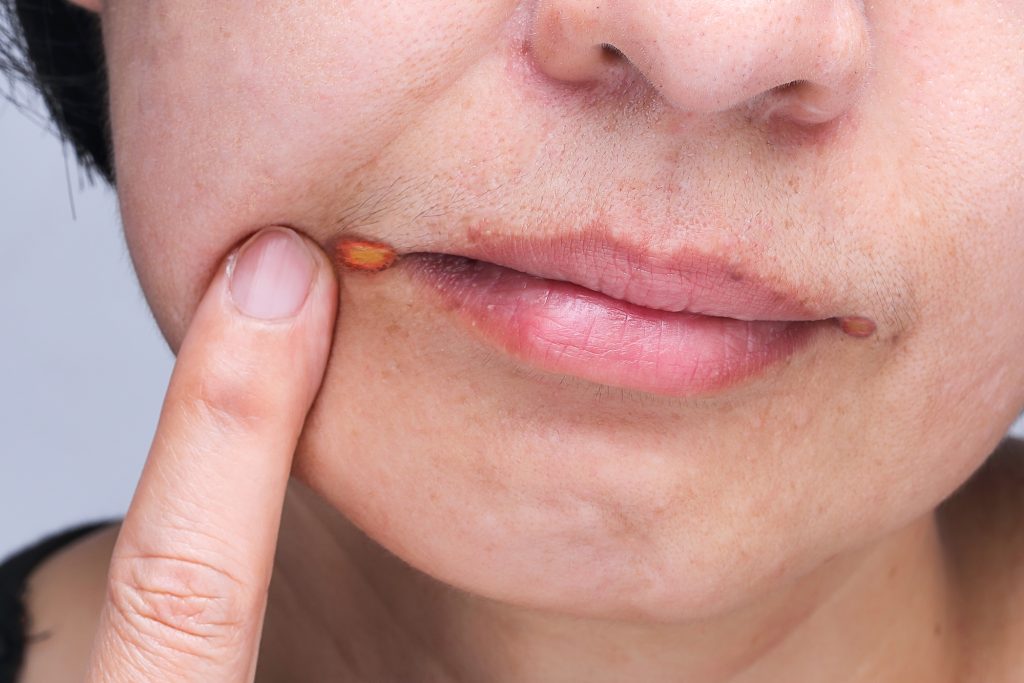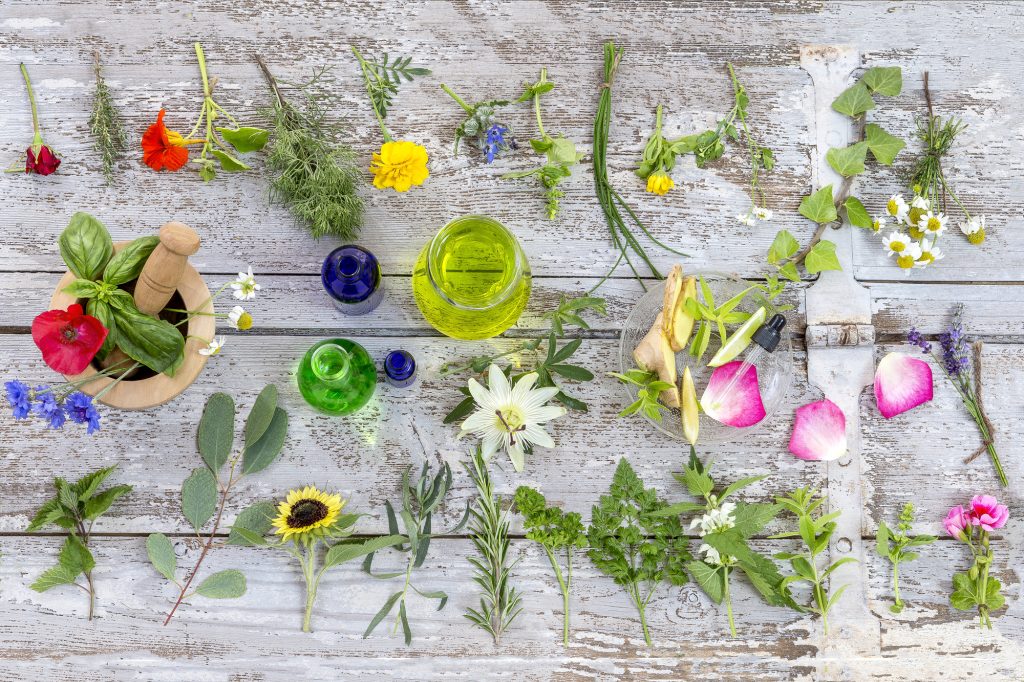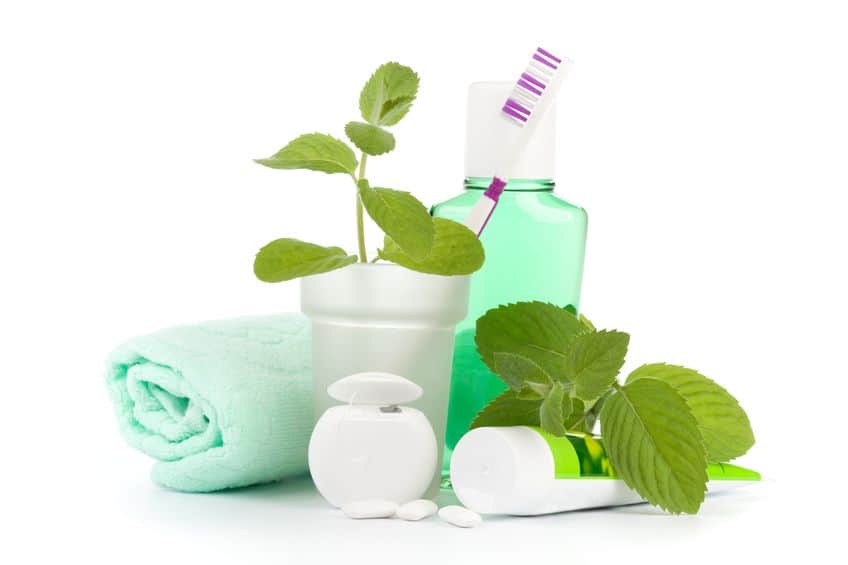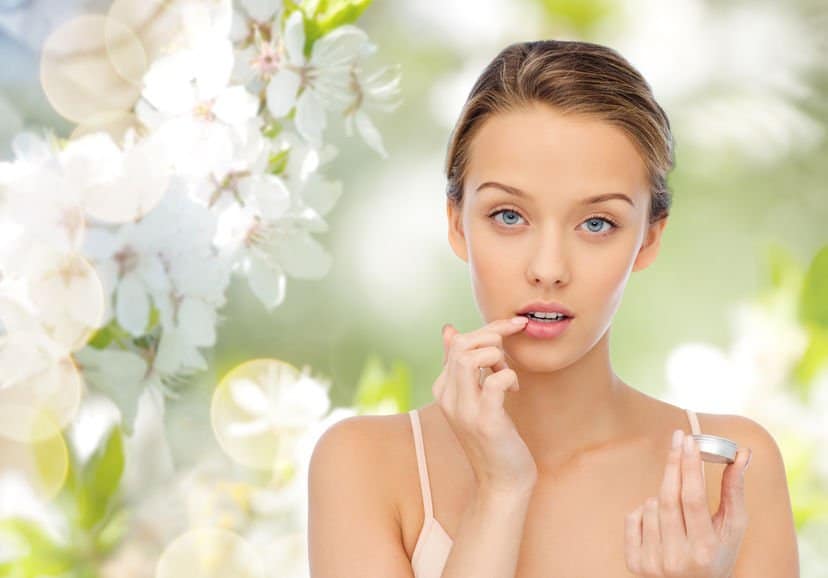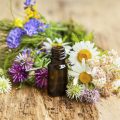Don’t you just hate it when someone tells you, ‘beauty is on the inside’ when they already have it on the outside?
Sure there’s some degree of truth in that statement but let’s not kid ourselves. We all find a beautiful face attractive. We’re all automatically drawn to such people and even aspire to be them. Heck, we even vote to see who the most beautiful people on earth are.
As such, it’s totally normal to freak out when rashes and blemishes take over your face and lips. Chances are that they will negatively impact your love life. Luckily, if the flaws are as a result of a yeast infection you can treat them and restore your beauty in a matter of days.
In this piece, I’ll share some yeast infection remedies that have worked wonders for me and others in the past. But even with these self-treatment options, I still insist on consulting a doctor in case there’s an underlying health issue. Alright, let’s begin with the basics?
What Is A Yeast Infection?
Yeast infection of the face is mainly caused by Candida albicans. Candida albicans is one of the 20 species of Candida that have a ‘soft spot’ for humans.
The funny thing is that Candida albicans naturally resides in the human digestive tract, mouth, and the skin. And, bacteria living on and in the human body keep it contained and prevent it from causing problems.
But from time to time, an opportunity presents itself and the Candida overgrows causing a yeast infection called candidiasis. There are two types of candidiasis that commonly affect the lips and face. These are perleche and oral thrush.
What Are The 2 Types of Yeast Infections in the Mouth and Lips
As noted above, everyone has bacteria in their mouth, throat and digestive system. That’s why most facial yeast infection cases usually start at the mouth before spreading. The infection starts from within and spreads to the lips once the yeast overgrows. Here are the two main infections that will bring about yeast infection on the lips.
1. Oral Thrush
Oral thrush is also known as oral candidiasis. This is a condition where Candida proliferates on the oral mucosa. The infection manifests as white lesions with a creamy discharge. Though they appear on the inner cheeks and the tongue, the lesions may spread to the gums, the back of the mouth, tonsils and the palate.
Oral thrush affects men and women regardless of their age. However, older adults and babies are more susceptible to getting infected courtesy of their weakened immunity. Also, persons with a suppressed immune system, other health problems or on medication are at a higher risk of developing the infection.
If you are healthy, oral thrush doesn’t pose much of a threat. But if your immune system is compromised, it can prove difficult to control and treat.
Symptoms of Oral Thrush
In adults and children
In its early stages, the symptoms are mild. In fact, they often go unnoticed. Oral thrush symptoms in children and adults include:
- Creamy white lesions on the inner cheeks, tongue and at times on the palate, tonsils, and gums
- Raised lesions that resemble cottage cheese
- Redness and soreness that is often severe enough to make eating and swallowing unbearable
- Bleeding when the lesions are scraped or rubbed
- Redness and cracking at the corners of your mouth
- Loss of taste
- Irritation, pain, and redness under dentures
In some severe cases i.e. when the oral thrush is caused by a weakened immune system as a result of HIV/AIDS or cancer, the lesions spread down into the esophagus.
When lesions grow in the esophagus the condition gets a new name – Candida esophagitis. The lesions in the esophagus will not only cause pain and difficulty swallowing food but also create a feeling of food getting stuck in the throat.
Breastfeeding mothers and infants
Breastfeeding mothers and their infants have an intimate relationship. The bond is natural. When infected infants breastfeed, they pass the infection on to their mothers. In such situations, treating the baby’s oral thrush doesn’t cut it. The mother’s breasts have to treated as well to avoid infection.
But how can one tell if their breasts have a yeast infection? Well, they will exude the following signs and symptoms.
- Flaky and shiny skin on the areola (the darker area surrounding the nipple)
- Unusually painful nipples when breastfeeding
- Stabbing pains in the breast tissue
- Unusually sensitive, red, itchy, and cracked nipples
Note: in addition to the creamy white lesions, infants may be irritable, fussy and experience trouble feeding.
Cause of Oral Thrush
Usually, the human immune system does a great job of repelling harmful bacteria, viruses, and fungi and lording over microbes the body has a symbiotic relationship with. The immune system is a master in maintaining a healthy balance between the good and bad microbes in the body.
But from time to time, the thorough protective mechanisms collapse leading to a spike in the number of Candida albicans. This rise leads to the development of oral thrush.
So now the question is what causes the otherwise thorough protective mechanisms to fail? And what are some of the factors that cause oral thrush to thrive?
Risk Factors of Oral Thrush
a. Weakened immunity
As I’ve already pointed out, older adults and infants are more likely to develop oral thrush because of their weakened immunity. But age isn’t the only factor that contributes to a weakened immunity.
Some treatments and medical conditions also suppress the immune system. Examples of these conditions and treatments include cancer and its various treatment methods, organ transplants and the required medication which suppress the immune system, and HIV/AIDS.
b. Diabetes
Uncontrolled or untreated diabetes leaves the saliva saturated with sugar. Sugar, in turn, creates a conducive environment for the growth of Candida.
c. Vaginal yeast infection
Vaginal yeast infection is also caused by Candida albicans. The infection can be passed to both infants and adults during birth and oral sex respectively.
d. Medication
Drugs like inhaled corticosteroids, prednisone or antibiotics designed to disturb the natural balance of microbes in the body increase the risk of getting oral thrush. But these are the same drugs prescribed to treat different conditions and infections.
How can they cause oral thrush? Well, it often happens when patients ignorantly self-medicate and when they don’t adhere to the dosage prescribed.
e. Other oral conditions like dentures
Dentures are removable replacements for missing teeth and their surrounding tissues. They are designed to restore dental beauty. But without proper dental hygiene, dentures can create a conducive environment for Candida and cause oral thrush.
Additionally, oral conditions that result in a dry mouth also increase the risk of infection.
Complication arising from Oral Thrush
With a strong immune system, the body can fight off the immunity in a matter of days. However, if HIV/AIDS and cancer are in the picture, oral thrush can transition into systemic candida which is a hard nut to crack.
Prevention of Oral Thrush
The measures below are designed to help reduce the risk of oral thrush
- Floss daily and brush your teeth after every meal.
- If you use corticosteroid inhalers you should always rinse your mouth or better yet, brush your teeth after.
- Remove your dentures when you go to sleep and clean them daily. If need be, consult your dentist for the best ways to clean your dentures.
- Watch your diet. This is especially for those who have diabetes. Limit your intake of sugary foods as sugar encourages candida growth.
- Keep a close eye on your blood sugar levels. Control your diabetes.
- Always treat vaginal yeast infection immediately.
Simple DIY Recipe for Oral Thrush
Now that you know what oral thrush is, here is a home-made recipe you can use to treat it.
What you need:
- Apple Cider Vinegar – 4 teaspoons
- Salt – 2 teaspoons
- Warm water – 1 cup
Instructions:
- Mix the above ingredients.
- Swish around your mouth and gargle several times daily to treat the infection.
2. Perleche (Another type of Lip Yeast Infection)
Perleche is also known as angular cheilitis, cheilosis or angular stomatitis.
It is simply a pain experienced in corners of the lips. Normally, the infection doesn’t spread beyond these corners but when left untreated, it can break bounds.
Symptoms of Angular cheilitis
Some of the symptoms include:
- Cracking and swelling of the lip corners
- Purple or red spots around the lip corners
- Burning sensation and pain at the corners of the lips
- Chapped and dry lips especially at the corners
Causes of Angular cheilitis
Saliva usually builds up in the corners of the mouth. When the saliva dries, it causes the skin in this area to crack. As a result of the cracked skin, most people tend to lick their lips. The resulting moisture and warmth in the corners create perfect conditions for the growth of Candida albicans which leads to an infection.
Individuals at Risk of Developing a Yeast Infection of the Lips
Though the infection can manifest on just about anyone, some people are at a higher risk than others. The list of individuals at risk includes those:
- Who have braces
- Who wear dentures
- Who lick their lips a little too often
- Who smoke
- Who have a deficiency of iron and vitamin B
- Who suck their thumb
Certain medical conditions can also increase a person’s risk of developing a yeast infection on the lips. These medical conditions include:
- Cancer of the blood
- Diabetes
- Down syndrome
- Anemia
- HIV and other immune-suppressing conditions
- Lung, liver, kidney and pancreatic cancer
Angular Cheilitis and Diabetes
Like with oral thrush, persons with diabetes are at a higher risk of developing angular cheilitis. The yeast fungi feed on the blood sugar and multiply exponentially. Exercising and being mindful of what you eat is essential in the prevention of angular cheilitis.
Diagnosis of Angular cheilitis
To determine if you have angular cheilitis, your doctor will examine the swelling, cracks, and redness at the corners of your mouth. Afterward, he will swab the corners of your mouth to determine the cause of the infection.
Treatment of Angular cheilitis
The goal here is to first clear the infection and then keep the lips and skin dry to avoid reinfection. Your doctor might prescribe an antifungal cream to combat the infection. Some of these creams include:
- Nystatin
- Ketoconazole
- Clotrimazole
Let’s now dig deep into the natural remedies we can use for yeast infections on lips and face.
3 Best Essential Oils For Lip Yeast Infections
1. Peppermint
In a recent study to determine which essential oil inhibits the growth of Candida albicans, peppermint stood out against 30 others. Even at concentrations of as low as 0.15 percent, peppermint showed substantial fungicidal properties. And the best part is, peppermint is one of the few essential oils that can be used safely around the lips and mouth.
2. Lemongrass
Definitely a jack of all trades, lemongrass essential oil has shown significant promise in the fight against drug resistant strains of fungi and bacteria, including candida albicans.
Lemongrass has also proven to be antifungal and antibacterial. No matter where the infection is, you can bet lemongrass will take care of it.
3. Cinnamon
Here’s another kitchen condiment whose essential oil proves an excellent remedy for lip yeast infections, thanks to its antifungal properties. You can add it to your water or tea and enjoy a nice, candida killing cocktail. The best part is that food grade cinnamon is totally safe for internal consumption; making it great for things like oral thrush.
2 Essential Oil Recipes For Lip Yeast Infection
Recipe 1: Oral Thrush Gargle
Ingredients:
- 3 drops Peppermint
- 2 drops Lemongrass
- 1 drop Tea Tree
- Glass of warm water
Directions:
If you really want to get rid of oral thrush, this here gargle will help kill off the overgrowth of candida albicans in your digestive system.
To make use of it, start by filling a glass with warm water and then dripping the essential oils as per above. Stir thoroughly to get everything mixed in and take a nice, long swig. Gargle for a while and then spit it out. Repeat everyday until the lip infection goes down.
Recipe 2: Yeast Infection Lip Balm
Ingredients:
- 2 drops Cinnamon
- 2 drops Peppermint
- 1 drop Lemon
- 10 ml Olive oil
Directions:
The lips are quite sensitive and require plenty of TLC just to maintain their normal look and function. So if you can make sure they’re always clean, hydrated and in good condition, you’ll never have to worry about yeast infection on lips again.
Mix the above recipe in a non-reactive bowl and store in a dark brown container. Make sure all your oils are organic grade. Apply the balm on your lips every morning to protect them from any albicans overgrowth.
Ready To Tackle Yeast Infection On Face
Can Yeast Infection affect the Skin on your Face?
So far we’ve looked at yeast infections of the face affecting the lips and the mouth. But can yeast infections manifest on the face’s skin as well? Yes, they can.
All that’s needed is a conducive environment to trigger a localized Candida albicans imbalance on your face and boom, you’re infected!
Usually, the facial yeast imbalance will be caused by:
- Poor facial hygiene
- Excessive sweating
- Aggressive facial routines that irritate the face
- Skin care products that disrupt the skin’s pH levels
For the above reasons, you should be cautious of the facial routines and skincare products you choose. Natural skincare is the way to go. Most facial cleansers, eye creams, moisturizers, toners and makeup products contain harsh ingredients which aggravate the skin and destabilize the pH. They will leave you vulnerable to yeast infections.
Generally, localized facial yeast infection is treated using antifungal creams (more on this later on) and by avoiding harsh beauty products. Additionally, you can try this apple cider vinegar recipe.
What you need:
- Cotton balls
- Apple Cider Vinegar (5% acidity)
Instructions:
- Dip the cotton balls in the ACV
- Place the cotton balls on your face (especially on areas with rashes)
- Leave the cotton balls on your face for an hour
- Remove the cotton balls and rinse your face with warm water
- Dry your face properly
- Repeat daily
For the remedy to work wonders, you should keep up with the treatment for a few weeks.
Note: if you find the sting from the vinegar too painful, dilute it with some warm water.
What Are The Best Essential Oils For Facial Yeast Infections
Most essential oils if not all, have antiviral, antibacterial, antifungal and anti-inflammatory properties. The human body receives them like it would other nutrients derived from food.
They are often used topically and penetrate the skin cell walls in about 30 minutes after their application. Essential oils repair cells that have been damaged over time.
But since essential oils are very potent, you’ll need to dilute them prior to use. This helps to avoid irritations, especially with sensitive skin. In addition, you should learn the best ways to use different essential oils. Be aware of their individual do’s and don’ts.
For instance, Tea Tree essential oil is safe for topical use but is poisonous when swallowed. Even the essential oils extracted from edible herbs like rosemary can be toxic if ingested in their concentrated form in large quantities.
Moreover, you should always have the oils out of reach of your kids. And if you are pregnant or lactating, check with your doctor before using essential oils.
Lastly, it’s important to note that all essential oils are different. Before choosing any brand you’ll need to do a thorough research of high-quality oils.
That said, let’s get the ball rolling. Below is a list of the top essential oils that can help with your facial yeast infection.
Best Essential Oils For Yeast Infection Of Face
1. Tea Tree Oil
This essential oil is used widely to treat and fight off infections. Tea Tree oil is often used to fight candida on the skin due to its antifungal properties. As we’ve just read above, given its highly potent nature, you should use tea tree oil externally only. Additionally, always dilute it in a carrier oil before using.
2. Lemongrass Oil
Lemongrass is incredibly popular in the Southeast of Asia. It is used as medicine for different ailments and as seasoning. Lemongrass essential oil has multiple properties including being anti-fungal, anti-bacterial, anti-inflammatory and contains a key compound citral which can fight off yeast infections on the face and mouth.
3. Clove Oil
Although used to treat vaginal yeast infections, clove essential oil is very effective at dealing with facial and lip yeast infections. When coupled with peppermint, studies reveal that it dismantles Candida’s biofilm and kills it. For this reason, the blend of these two essential oils is beneficial to women who experience yeast infections on a recurrent basis.
4. Thyme Oil
Thyme oil is effective against yeast infections courtesy of its anti-fungal properties. In fact, in a 2016 study comparing 7 essential oils, Thyme was found to be the most effective against Candida albicans.
5. Oregano
Studies reveal that oregano is just as powerful as tea tree oil and inhibited the fungal growth of Candida albicans very efficiently. Anyone on a tight budget who cannot really afford several essential oils can go for a blend of oregano and tea tree essential oil. Add in cedarwood / cedarleaf essential oil and you have a powerful antifungal blend to get rid of yeast infection on your face and lips.
Essential Oil Blends for Yeast Infections on Face
Recipe 1: Powerful Antifungal Cream
What you need:
- Pure shea butter – ¼ cup
- Beeswax pastilles – ¼ cup
- Coconut oil – ¼ cup
- Tea tree oil – 20 drops
- Cedarwood oil – 16 drops
- Oregano oil – 8 drops
- Cinnamon oil – 10 drops
- Glass jar (amber) – 8 Oz
This cream is made from two of the most powerful antifungal essential oils available. With the kind of power it packs, it’s bound to get the job done. Using this blend, you should find relief in a few weeks. What’s even better, the cream is easy to prepare. Really, it is! Below are the steps to follow:
Method:
- Add the shea butter, beeswax, and coconut oil into the 8 oz glass jar.
- Pour ½ cup of water into a pot and bring to a boil over low heat.
- Place your mason jar in the pot being careful not to let water spill inside it. The water level should rise to about half the jar.
- Let the oils in the glass jar melt completely in the low heat. Stir regularly.
- Once they are melted into a thick liquid, turn off the heat and remove the jar from the pot. Give the blend 5 minutes to cool.
- When it’s cooled, add the essential oils as you stir.
- And that’s it. The blend is ready. Simple right?
- Now all that’s left is to let it harden into a cream.
- Scoop some cream and apply to the affected area. The area you apply the cream to should be clean and dry
Recipe 2: Soothing and Cooling Gel
What you need:
- Tea Tree oil – 12 drops
- Lavender oil – 8 drops
- Glass Jar – 4 Oz
- Aloe vera gel – ¼ cup
Yeast infections are itchy and irritating. They often manifest as rashes. This here gel contains ingredients that will soothe the rashes and reduce the itchy feeling in addition to fighting off the infection.
Method:
- Get a clean bowl and mix the ingredients thoroughly using a fork or a whisk.
- Transfer the gel blend into the amber jar. It’s important that the jar is amber to protect the aloe vera from light degradation.
- Scoop the gel and apply it to the affected areaa. Once again, it’s important that the area is dry and clean – this can’t be stressed enough.
Recipe 3: Yeast Clear Essential Oil Blend
What you need:
- Lemongrass – 3 drops
- Peppermint – 2 drops
- Coconut oil – 1 tbsp
Though the blend is simple it does get the job done. You can use it alongside the antifungal cream in Recipe 1 for maximum benefits.
Method:
The preparation is easy. Simply mix the ingredients in a bowl or a jar. When it’s ready, apply it over affected areas on a daily basis.
Recommended Products: Anti-fungal Product Reviews
Now that you have a good understanding of facial and lip yeast infections, below are some of the best products to use to alleviate your symptoms and treat the infection. As you are probably aware by now, there are hundreds of creams designed to combat yeast infections. However, I’ve only chosen 2 products to tackle the issue: once is an antifungal cream and the other one an antifungal soap both meant to combat yeast infections.
1. Puriya Wonder Balm
This is a skin balm created using natural vitamins and oils. The ingredients (Beeswax, Lavender oil, Vitamin C, Rose Geranium oil, Tea Tree oil, Olive oil, Canola oil, Eucalyptus oil, and Macadamia nut oil) are effectively combined to treat a host of fungal infections including ringworm, jock itch, and candida.
It’s the perfect ointment for individuals who use public pools and gyms (places prone to fungal infections). Additionally, Puriya wonder balm is effective in treating skin ailments including cracked skin, scrapes, cuts, rashes, sunburns, insect bites and minor burns.
The balm works in four impressive steps:
- Stops itching and the spread of infection – it achieves this courtesy of its potent natural ingredients: Puriya wonder balm has antibacterial and antifungal properties which stop itchiness, irritability and the spread of infections.
- Treatment stage – the carrier oils (Macadamia nut, Olive, Canola) and beeswax collectively soothe and moisturize dry skin. They help to treat the red, itchy and scaly skin associated with yeast infections.
- Fast recovery – Puriya implements an advanced stay-on formula in this balm. The formula treats the skin for longer periods in comparison to most soaps and lotions. This accelerates skin repair.
- Reoccurrence prevention – through repeated use, the balm offers a powerful line of defense against future candida and fungal infections.
Pros
- It’s made from natural ingredients
- Offers fast relief, treatment and long-lasting protection against fungal infections
Cons
- A few clients have experienced allergic reactions, so be sure to check that you are not allergic to any of the ingredients
- It has a strong smell that puts off some customers
Click here to read more information on this product.
2. Remedy Anti-fungal Soap Review
The best antifungal body washes are designed to be effective in killing fungus as well as be gentle on the skin.
All-Natural Remedy Anti-Fungal Soap is one such product that has won the hearts of many and at the same time helped against yeast infections.
It is made up from Aloe vera, Peppermint and Tea Tree oil. These ingredients help in cleansing the face, skin, nails and feet while simultaneously protecting against bacteria and fungi.
The soap also contains Coconut, Jojoba, and Olive oils which moisturize and hydrate the skin.
With this soap, you can wave bye-bye to smelly feet, athletes foot, toenail fungus, embarrassing body odor, dry itchy skin, and candida. The results are quite impressive.
What’s even better, the soap is free of synthetic chemicals, fragrances, colors, preservatives, detergents, and alcohol. For this reason, it can be used on all body parts without causing irritations.
Pros
- Once again, it’s made from natural ingredients
- It relieves all types of skin infection and irritation and can be used on all body parts
Cons
- Some customers feel it’s a little bit dear. But trust me, for such high-quality soap, it’s a good investment
The Bottom Line
Facial yeast infection is fairly easy to treat using antifungal medication, over the counter products and essential oils.
If the condition worsens, spreads or causes you extreme discomfort, it’s important to consult your medical practitioner promptly for diagnosis. Why is this so important? Well, the yeast infection might just be a symptom of a serious underlying health problem (like in the case of systemic candida).

